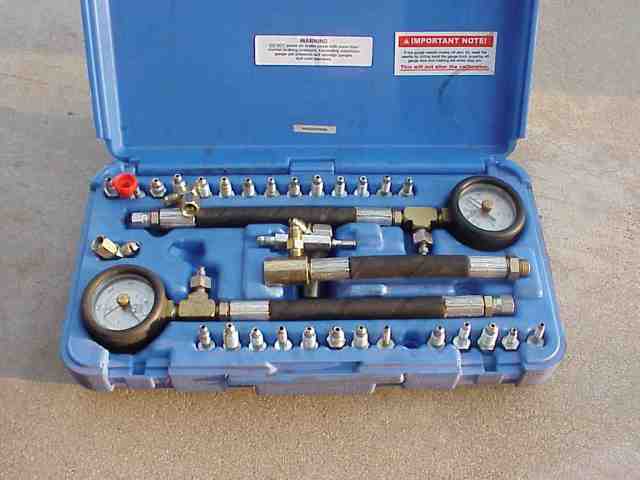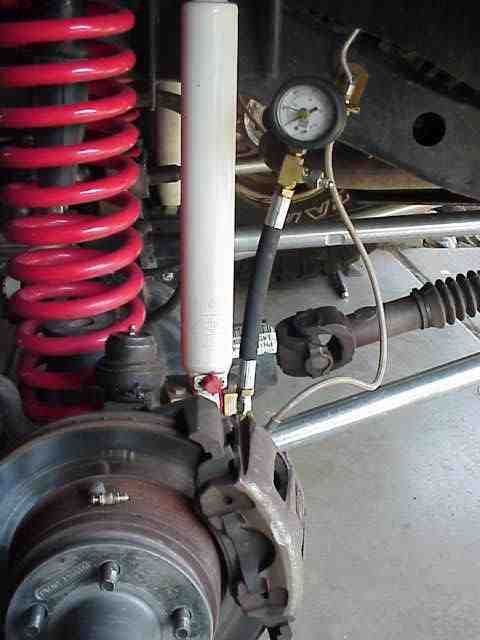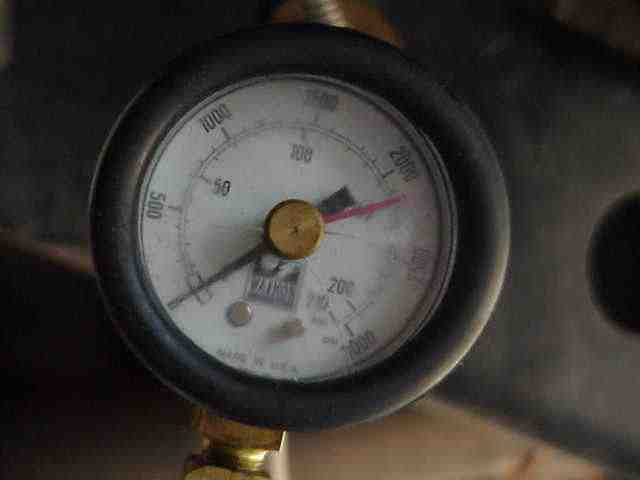I was in a situation the other day where I was getting ready to do a brake project on the TJ and I wanted some accurate before and after numbers to see what kind of change might occur. A good friend was kind enough to loan me his brake line pressure test kit. Too many of us have read those on-line comments that go something like “I put the XYZ brake thing on my Jeep and the braking was much better….I could feel the difference, no doubt about it.” I’ve been guilty of it and I am sure many of you have as well. So, I decided to gather some real numbers so I didn’t have rely on my….well, what ever it is you rely on when you make those kind of statements.

If you are like me, you may need to use one of these once or twice in your life (or not). I can’t justify buying something that will see that kind of use. However, if you want the real numbers, then it is hard to live without it. The kit comes with a pair of 3000 PSI gauges and a variety of adapters that allow it to be hooked up to just about any brake line fitting.

Use is quite simple. I wanted to check my the line pressure at my front calipers. To do so, you start by removing the bleeder valve from the caliper. Find the appropriate adapter in the kit and screw it into the caliper. The gauge is connected to a short length of high pressure hose with a fitting that will connect to the adapter you just put in the caliper. A bleeder valve is located at the base of the gauge which allows you to bleed the air from the hose.

The gauge as one of those pointers on it that allows it to retain the highest line pressure. You can reset it to zero at any time in order to record a new peak pressure. With your buddy in the driver’s seat, bleed the air from the test hose. Reset the pointer to zero and have your friend push the brake pedal. Read the numbers and you are done. When done, remove the hose and the adapter from your caliper and reinstall the caliper bleed valve. You will have to bleed your brakes since you have opened the system but the way I see it, this gives you a good reason to get a fresh container of brake fluid to flush out the old junk in your lines (you know, the stuff that always comes out darker than the new stuff you add to the master cylinder).